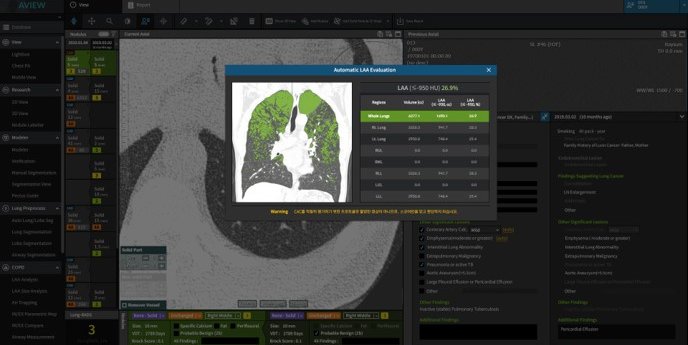
Company: Coreline Soft Product: AVIEW LCS+
Artificial intelligence system for identification of overlooked lung metastasis in abdominopelvic computed tomography scans of patients with malignancy
Diagnostic and Interventional Radiology, 2024
Abstract
Purpose
This study aimed to evaluate whether an artificial intelligence (AI) system can identify basal lung metastatic nodules examined using abdominopelvic computed tomography (CT) that were initially overlooked by radiologists.
Methods
We retrospectively included abdominopelvic CT images with the following inclusion criteria: a) CT images from patients with solid organ malignancies between March 1 and March 31, 2019, in a single institution; and b) abdominal CT images interpreted as negative for basal lung metastases. Reference standards for diagnosis of lung metastases were confirmed by reviewing medical records and subsequent CT images. An AI system that could automatically detect lung nodules on CT images was applied retrospectively. A radiologist reviewed the AI detection results to classify them as lesions with the possibility of metastasis or clearly benign. The performance of the initial AI results and the radiologist's review of the AI results were evaluated using patient-level and lesion-level sensitivities, false-positive rates, and the number of false-positive lesions per patient.
Results
A total of 878 patients (580 men; mean age, 63 years) were included, with overlooked basal lung metastases confirmed in 13 patients (1.5%). The AI exhibited an area under the receiver operating characteristic curve value of 0.911 for the identification of overlooked basal lung metastases. Patient- and lesion-level sensitivities of the AI system ranged from 69.2% to 92.3% and 46.2% to 92.3%, respectively. After a radiologist reviewed the AI results, the sensitivity remained unchanged. The false-positive rate and number of false-positive lesions per patient ranged from 5.8% to 27.6% and 0.1% to 0.5%, respectively. Radiologist reviews significantly reduced the false-positive rate (2.4%-12.6%; all P values < 0.001) and the number of false-positive lesions detected per patient (0.03-0.20, respectively).
Conclusion
The AI system could accurately identify basal lung metastases detected in abdominopelvic CT images that were overlooked by radiologists, suggesting its potential as a tool for radiologist interpretation.
Read full study